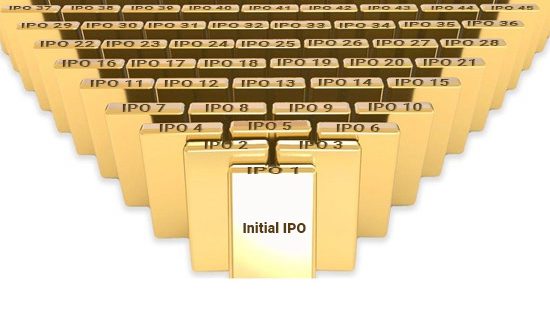Deschenaux Barber & Partners LLP
Originally posted on WWL:
https://whoswholegal.com/features/ipo-financing-investment
An essential attribute of a growing and dynamic economy is the methodology for pooling funds to finance new, innovative and promising enterprises. In the United States, one of the most powerful tools to pool funds is a public offering of shares through either a RegA+ or an S-1 procedure. But it is difficult, if not impossible, to raise the budget of an initial public offering (IPO). There are three types of costs involved. First, the “upfront” or “pre-cash” costs that must be borne by the company before the effective date of the IPO; these costs cover attorneys, accountants, etc. Second, “post-cash” costs, such as commissions to brokers, investment banks and, once again, lawyers and accountants. Finally, there is usually a less obvious cost: the IPO process monopolises a significant portion of the company’s resources and generally consumes management’s attention. That is why it is not uncommon that during the IPO process, the performance of the company is negatively impacted, engendering yet another need for funding – if only to offset the pre-IPO poor sales performance.
From other perspectives, there are two main hurdles to overcome in pooling funds from investors. From the investor’s standpoint, there is the question of how to invest for a short period of time and make a significant profit. From the entrepreneur’s or company’s point of view, there is the question of how to finance a large transaction and manage the investors’ expectations and shareholder rights, especially in relation to management control and remuneration.
Solving this problem is the same as rescuing a stray puppy: get control of the stray (create a key term sheet signed by all parties); provide it with care and attention (assist management in the IPO process); foster it (provide the necessary funding); and find it a permanent home (see it through to listing on a public exchange).
When acquiring or merging a company, it is possible to use the cash of the target company to pay off investors. Developing a financing plan that turns the IPO process into a merger can satisfy the investors’ desire for a quick turn of profit, and enables the entrepreneur to keep control.
Definition
A fundraising incubator company (an incubator) is incorporated in the state of Delaware in the USA. It is a traditional financial company that, depending on its structure, may or may not be required to register with the Securities and Exchange Commission (SEC) under the 1940 Investment Company Act. This company finances corporate transactions, such as an IPO, in return for an equity participation and a put option for an equity participation in the company to be financed.
The incubator could also finance other types of transactions, such as a merger, acquisition, securities private placement or any other kind of transaction, as long as in the end there is a sure liquid market that is able to absorb the purchase of the incubator’s equity participation.
In the SPV, all assets of the company or group seeking IPO financing must be consolidated together so long as owner’s name recognition is not sacrificed
The put option, issued by the same issuer as the equity participation, ensures the investor that, if the transaction is successful in the case of the IPO, it can resell this participation to the issuer immediately afterwards. Of course, this assumes that the cost of repurchase is anticipated and included in the amount of financing obtained by the corporation in the transaction.
Today, transaction financing is rare to the point of being exceptional. It remains the exclusive privilege of large investment banks, who reap huge profits therefrom.Foster
This situation is why I invented a new combination called Foster. The principle is simple: a special vehicle company, or special purpose vehicle (SPV) is incorporated in Delaware. In the SPV, all assets of the company or group seeking IPO financing must be consolidated together so long as owner’s name recognition is not sacrificed. This credibility issue must be studied case by case.
The incubator’s team of lawyers prepares a “Regulation A+” disclosure document for the incubator. This disclosure document states to the investor that the incubator is an investment company that finances IPOs of any size, against a share of the capital prior to the IPO and a pro rata share of the raised funds payable after the IPO.
This document offers the investor three ways out of investment:
- he or she sells the incubator shares at the time of the IPO;
- he or she converts the incubator actions into SPV actions after the incubator IPO, and before the start of the SPV IPO process; or
- the incubator buys back his or her shares after the incubator IPO.
The incubator files with the SEC for registration and listing on a US stock market. The SEC then reviews the file and sends its comments, questions and possible objections to the incubator.
Meanwhile, the incubator and the investment bank (or investment bank syndicate) that distributes its shares, hold roadshows to promote the stock on the market and to collect the incubator’s share “orders”. During this period, legally, each market player is not allowed to buy the shares; they can only express their interest and quantify the amount they are willing to invest. In practical terms, a buyer who expresses an interest in a quantity of shares and then withdraws would lose any credibility on the market and would be unable to continue trading in other IPOs.
At the end of this process, the SEC gives the incubator the quotation authorisation. The incubator can therefore register with a US stock market, such as NASDAQ. The incubator may also register with foreign stock exchanges.
The incubator then rings the NASDAQ bell and makes his or her IPO. Once the funds are raised, in accordance with the use of the product stipulated by the Reg A+ disclosure document, the incubator makes, at a minimum, the following payments:
- a payment to the investment bank’s account to pay the brokerage commission, if it was not deducted before the funds were sent to the incubator;
- a payment to the SPV account to secure SPV funding;
- a payment of the SPV’s IPO fees and expenses to the lawyers’ account;
- payment of a success bonus on the lawyers’ account, according to the prescribed procedures; and
a payment to the incubator for the IPO.
The SPV receives, from the incubator, the budget necessary to carry out its IPO. The SPV’s team of lawyers then drafts a “Regulation S-1” disclosure document for the SPV. The SPV’s team of lawyers prepares the SPV registration file, with the SEC in Form S-1, and the due diligence file. This is much longer than the Reg A + form. It should be noted that the Reg A+ form is a short form because it seeks a partial exemption from registration, while the S-1 form is a complete record including all significant transactions carried out by the issuer in the past five or 10 years, according to the case. The issuer cannot begin this full registration process until it has two full accounting years and a number of financial conditions completed.
This document offers the investor three ways out of investment:
- her or she sells SPV shares at the time of the IPO;
- the SPV buys back their shares after the incubator’s IPO; or
- if the investor does not wish to leave, her or she remains a shareholder of the SPV by focusing on his or her activity.
The SPV files its prospectus with the SEC to register and obtain the listing of its shares on a US public stock market. The SEC then reviews the SPV’s file and sends its comments, questions and possible objections to SPV.
Meanwhile, the SPV and the investment bank (or investment bank syndicate that distributes its shares) organise roadshows to promote security on the market and to collect the SPV’s “orders” for shares. During this period, legally, each market player is not allowed to buy the shares; they can only express their interest and quantify the amount they are willing to invest. In practical terms, a buyer who expresses an interest in a quantity of shares and then withdraws would lose any credibility on the market and would be unable to continue trading in other IPOs.
At the end of this process, the SEC gives the SPV the quotation authorisation.The SPV may then register with a US stock market, such as NASDAQ. The SPV may also register with foreign stock exchanges.
The SPV then rings the NASDAQ bell and makes its IPO. Once the funds have been raised, in accordance with the use of the product stipulated by the Reg A+ disclosure document, the SPV makes, at a minimum, the following payments:
- a payment to the investment bank’s account to pay the brokerage commission, if it has not been deducted before remitting the funds to the SPV;
- a payment to the SPV’s operations account to secure SPV funding.
- payment of the SPV’s IPO fees and expenses to the lawyers’ account;
- payment of a success bonus on the account of the lawyers according to the prescribed procedures; and
- a payment to the financier of the SPV’s IPO, the incubator.
Objections?
Why not a simple loan? The main reason is that under most jurisdictions, loans are limited to a certain interest rate percentage (usury rate). In Switzerland, the federal law limits this usury rate at 15 per cent and makes any interest rate set above that limit unlawful and thus, not payable. The investors usually want a higher return on their investment than the usury rate will allow, as any transaction financing investment represents a significant degree of risk, at least from a market perception standpoint.
It is worth noting that the proposed structure is in any case far less risky than private equity and private debt, because it finances not only the corporation but also the divestment – the exit of the investment by the investor through access to a financial market.
Risk of a Transaction-Financing Investment
The risk linked to a transaction-financing investment is directly linked to the probability of the transaction being successful. Therefore, as a rule of thumb, we can say that the transaction-financing investment risk is directly linked to the quality of the agreements binding the parties to the transaction and to these parties’ willingness to execute the transaction properly. This is especially true in the case of an IPO.
Rules of Prudence
The basic rules of prudence in a transaction financing investment are the following.
First, having a commitment from both parties to the transaction provides the safest conditions to the investment. However, this is rare and mostly impossible. Commonly, a transaction-financing agreement is entered into between one party to the transaction and the investors’ representative.
Second, reduce the time frame of the investment to a minimum. This rather simple rule has lots of implications, from logistics to legal conditions. The investors’ representative, who should be a financier, an investment bank or a fund, should pool the funds into an account under his control and verify the parties’ consents and willingness to proceed.
Finally, have all the key transaction terms agreed upon before the financing takes place. The investor, or their representative, must ascertain that the parties are in full agreement on all terms of the transaction. While the parties might not be able to bear the cost of drafting all agreements before the transaction financing takes place, they can surely produce a complete term sheet for each agreement needed for the transaction. Any party receiving the transaction financing can also take the commitment toward the investor that no other additional or new term shall be required from the other party after the financing takes place, preventing the classic last-minute requirement that makes the transaction fail.
Conclusion
The Foster solution makes it possible to make a first IPO of the incubator serving as a mezzanine of support to an SPV, to pay for the SPV’s IPO. The cost to the incubator is only around US$2 million. The potential profits to the incubator are enormous, and the benefits to the shareholders of the SPV are fast and calculable. The permanent home for the Foster is a market for publicly traded shares: a happy ending for all.
Deschenaux Barber & Partners LLP
Originally posted on WWL:
https://whoswholegal.com/features/ipo-financing-investment




